Athenian agora ap art history – Athenian Agora: Art History Unveiling Ancient Athens takes readers on a captivating journey through the heart of ancient Athenian society, where art, architecture, and daily life intertwined.
Prepare to delve into the historical significance, architectural wonders, artistic masterpieces, and cultural reflections embedded within the Athenian Agora, as we unravel the secrets of this remarkable civic and commercial center.
Athenian Agora
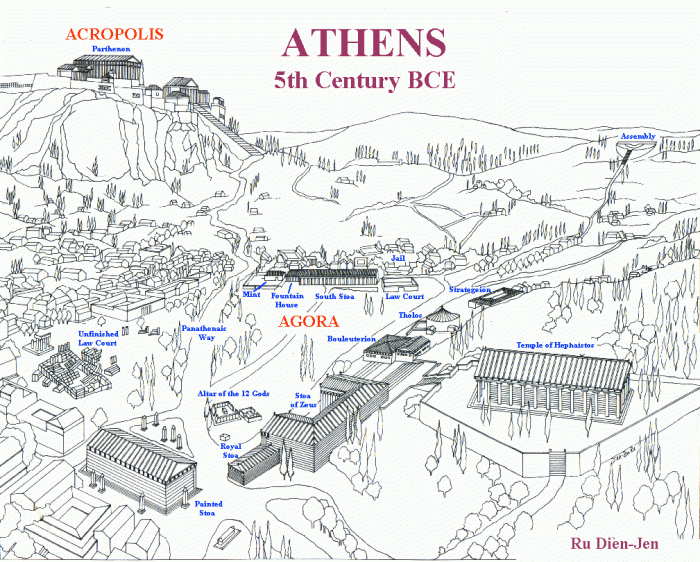
Historical Significance
The Athenian Agora was the civic and commercial heart of ancient Athens. It served as a bustling marketplace, a gathering place for citizens to discuss politics and philosophy, and a site for religious ceremonies.
- Political Center:The Agora was the location of the Athenian Assembly, where citizens met to debate and vote on laws. It was also the site of the Bouleuterion, where the Council of 500 met to prepare legislation for the Assembly.
- Commercial Hub:The Agora was a major trading center, with shops selling everything from food to clothing to pottery. It was also a center for banking and finance.
- Religious Center:The Agora was home to several temples, including the Temple of Hephaestus and the Temple of Apollo Patroos. These temples were used for religious ceremonies and festivals.
The Athenian Agora was a vibrant and essential part of ancient Athenian life. It was a place where citizens could come to participate in government, trade, and religious activities.
Architectural Features of the Agora
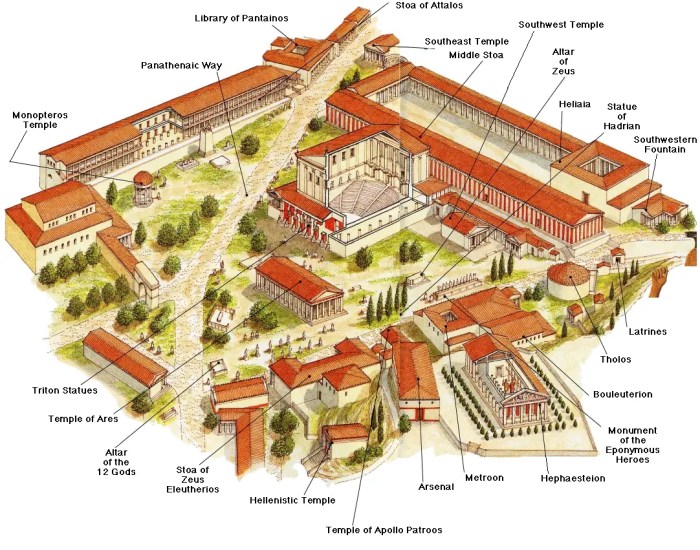
The Athenian Agora was the civic and commercial heart of ancient Athens. Its architectural layout reflected the city’s political, social, and economic importance.
The Agora was a large, open space surrounded by public buildings, temples, and shops. The most prominent structures included the Stoa of Attalos, the Temple of Hephaestus, and the Tholos.
Stoa of Attalos
The Stoa of Attalos was a large, two-story colonnade that served as a marketplace and a meeting place for philosophers and politicians. It was built in the 2nd century BC and is one of the best-preserved examples of ancient Greek architecture.
Temple of Hephaestus
The Temple of Hephaestus was built in the 5th century BC and is one of the oldest and best-preserved temples in Athens. It is dedicated to the god of metalworking and is a fine example of the Doric order of architecture.
Tholos
The Tholos was a circular building that served as the council chamber for the Boule, the governing council of Athens. It was built in the 5th century BC and is a unique example of ancient Greek architecture.
| Structure | Period | Architectural Order | Purpose |
|---|---|---|---|
| Stoa of Attalos | 2nd century BC | Ionic | Marketplace, meeting place |
| Temple of Hephaestus | 5th century BC | Doric | Temple to Hephaestus |
| Tholos | 5th century BC | Ionic | Council chamber |
Artistic Masterpieces of the Agora: Athenian Agora Ap Art History
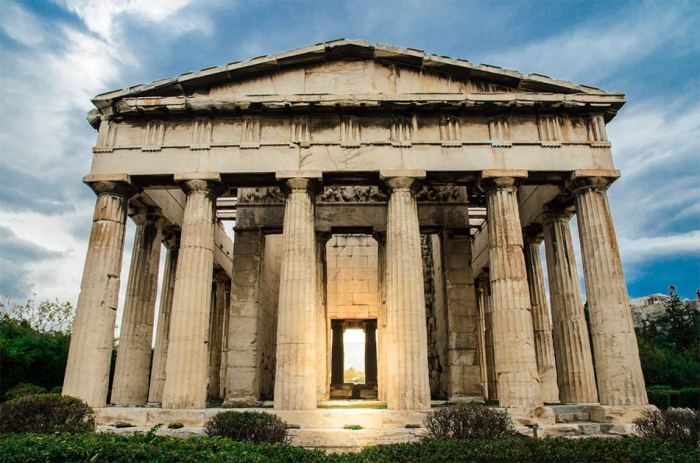
The Athenian Agora was not only a bustling marketplace and civic center but also a repository of artistic treasures. Over the centuries, numerous sculptures and artifacts have been unearthed from the Agora, providing valuable insights into Athenian culture and artistic prowess.
These masterpieces reflect the Athenians’ exceptional skill in sculpting, metalworking, and pottery. They depict a wide range of subjects, from gods and goddesses to everyday citizens, offering a glimpse into the lives, beliefs, and values of ancient Athens.
Sculptures
- Kritios Boy: This bronze statue of a young athlete is considered one of the finest examples of Early Classical sculpture. It captures the idealized male form with remarkable precision and grace.
- Eirene and Ploutos: A marble statue depicting the goddess of peace, Eirene, holding the infant Ploutos, the god of wealth. It symbolizes the prosperity and harmony that prevailed in Athens during the 5th century BC.
- The Tyrannicides: A pair of statues commemorating the Athenian heroes Harmodius and Aristogeiton, who assassinated the tyrant Hipparchus in 514 BC. The statues were a powerful reminder of the Athenians’ love of freedom and democracy.
Artifacts, Athenian agora ap art history
- Panathenaic Amphorae: These large ceramic jars were awarded as prizes to the winners of the Panathenaic Games, an important religious festival held in Athens. They were decorated with intricate scenes depicting the goddess Athena and other mythological figures.
- Bronze Hydria: A large water jar made of bronze, used for storing and transporting water. It is decorated with a frieze depicting a procession of gods and goddesses, including Zeus, Hera, and Poseidon.
- Marble Stelae: These carved stone slabs were used as grave markers and often featured reliefs depicting the deceased or scenes from their lives. They provide valuable insights into Athenian funerary customs and beliefs about the afterlife.
Agora as a Reflection of Athenian Society
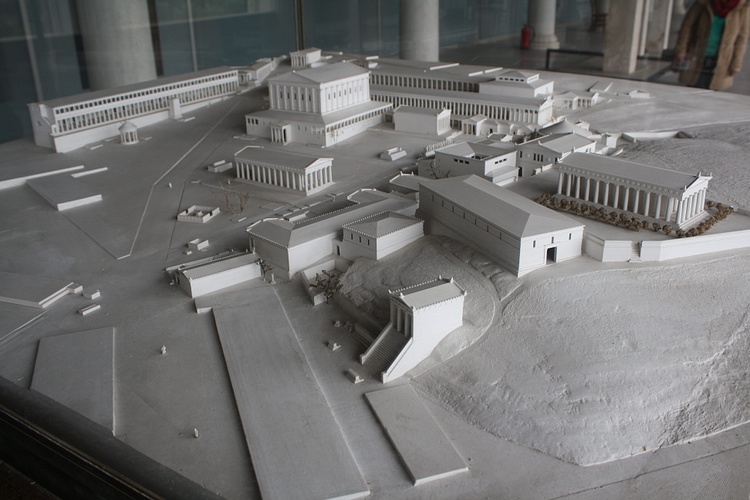
The Athenian Agora served as a microcosm of Athenian life, reflecting the political, social, and economic aspects of the city-state. It was a bustling hub where citizens from all walks of life converged to engage in a wide range of activities.
Political Life
The Agora was the heart of Athenian democracy. The Assembly, composed of all male citizens over the age of 18, met in the Agora to debate and vote on important issues affecting the city. The Council of Five Hundred, a representative body that prepared laws and policies for the Assembly, also held its meetings in the Agora.
The Agora witnessed numerous political speeches, debates, and even riots, showcasing the vibrant and often contentious nature of Athenian political life.
Social Life
The Agora was a social gathering place where Athenians from all walks of life interacted. It was a place to meet friends, exchange news, and gossip. People would stroll through the Agora, visit temples, and participate in festivals and other public events.
The Agora also served as a marriage market, where young women and their families would display themselves in hopes of attracting potential suitors.
Economic Life
The Agora was the economic center of Athens. It was home to a vibrant marketplace where merchants from all over the Mediterranean traded their goods. Athenians could purchase a wide variety of products in the Agora, including food, clothing, pottery, and jewelry.
The Agora was also the site of banking and financial activities, with money changers and lenders operating in the area.
Daily Activities, Rituals, and Events
The Agora was a hive of activity throughout the day. Athenians would visit the Agora to shop, socialize, or participate in political or religious activities. The day began with the opening of the marketplace, where merchants would set up their stalls and begin selling their goods.
As the day progressed, the Agora would fill with people engaged in a variety of activities.Religious rituals and festivals were an important part of Athenian life, and many of these took place in the Agora. The Panathenaia, the most important festival in Athens, culminated in a grand procession that passed through the Agora.
Other festivals, such as the Anthesteria and the Eleusinian Mysteries, also included ceremonies and rituals that took place in the Agora.
Influence on Athenian Art and Culture
The Agora was a major source of inspiration for Athenian artists and intellectuals. The sculptures, temples, and other architectural features of the Agora reflected the city’s wealth, power, and cultural sophistication. The Agora also served as a stage for performances by poets, playwrights, and musicians.
The Athenian Agora, a bustling marketplace and civic center in ancient Greece, is a fascinating subject in AP Art History. Its ruins provide insights into the daily life and culture of the Athenians. But did you know that the term “drum with a sitar” appeared in a crossword puzzle ? Returning to the Athenian Agora, its well-preserved architecture and artifacts continue to inspire artists and historians alike, shedding light on the grandeur and complexity of ancient Greek civilization.
The works of Aeschylus, Sophocles, and Euripides, among others, were first performed in the Agora.The Agora was a central part of Athenian life and played a vital role in shaping the city’s political, social, economic, and cultural development. It was a place where Athenians from all walks of life came together to engage in a wide range of activities, from political debate to religious rituals to everyday shopping.
The Agora was a reflection of the vibrancy and diversity of Athenian society, and its legacy continues to inspire people today.
Preservation and Restoration of the Agora
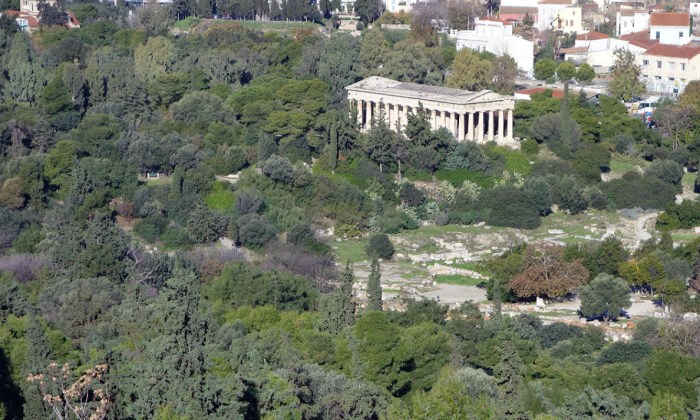
The Athenian Agora has undergone significant preservation and restoration efforts to maintain its historical and cultural significance. Archaeological excavations have played a crucial role in uncovering and studying the Agora’s rich past, while restoration work has aimed to preserve its architectural integrity and aesthetic beauty.
Challenges and Techniques in Archaeological Excavations
Archaeological excavations in the Agora present several challenges, including:-
- Excavating a densely populated urban area requires careful planning and coordination.
- Preserving fragile artifacts and structures during excavation is crucial.
- Interpreting and understanding the excavated remains can be complex.
To overcome these challenges, archaeologists employ various techniques:-
- Stratigraphic excavation involves carefully removing layers of soil to reveal the history of the site.
- Artifact analysis provides insights into the daily life and culture of the Agora’s inhabitants.
- Architectural reconstruction helps visualize the original appearance of buildings and structures.
Importance of Preserving the Agora
Preserving the Athenian Agora is essential for several reasons:-
- It serves as a tangible connection to the past, providing valuable insights into ancient Greek civilization.
- It is a source of national pride and cultural identity for Greece.
- It attracts tourists from around the world, contributing to the country’s economy.
Restoration efforts have focused on preserving the Agora’s architectural features, including the Stoa of Attalos, the Temple of Hephaestus, and the Odeon of Agrippa. The Agora’s public spaces, such as the Panathenaic Way and the Square of the Winds, have also been restored to their former glory.
By preserving and restoring the Athenian Agora, we ensure that future generations can continue to appreciate and learn from this remarkable historical site.
Popular Questions
What is the significance of the Athenian Agora?
The Athenian Agora was the central public space of ancient Athens, serving as the civic, commercial, and social hub of the city.
Name some famous structures located in the Agora.
The Agora boasts iconic structures such as the Stoa of Attalos, the Temple of Hephaestus, and the Tholos, each showcasing distinct architectural styles and historical significance.
How does the Agora reflect Athenian society?
The Agora was a microcosm of Athenian life, hosting political assemblies, religious ceremonies, commercial activities, and cultural events, providing insights into the political, social, and economic aspects of the city.